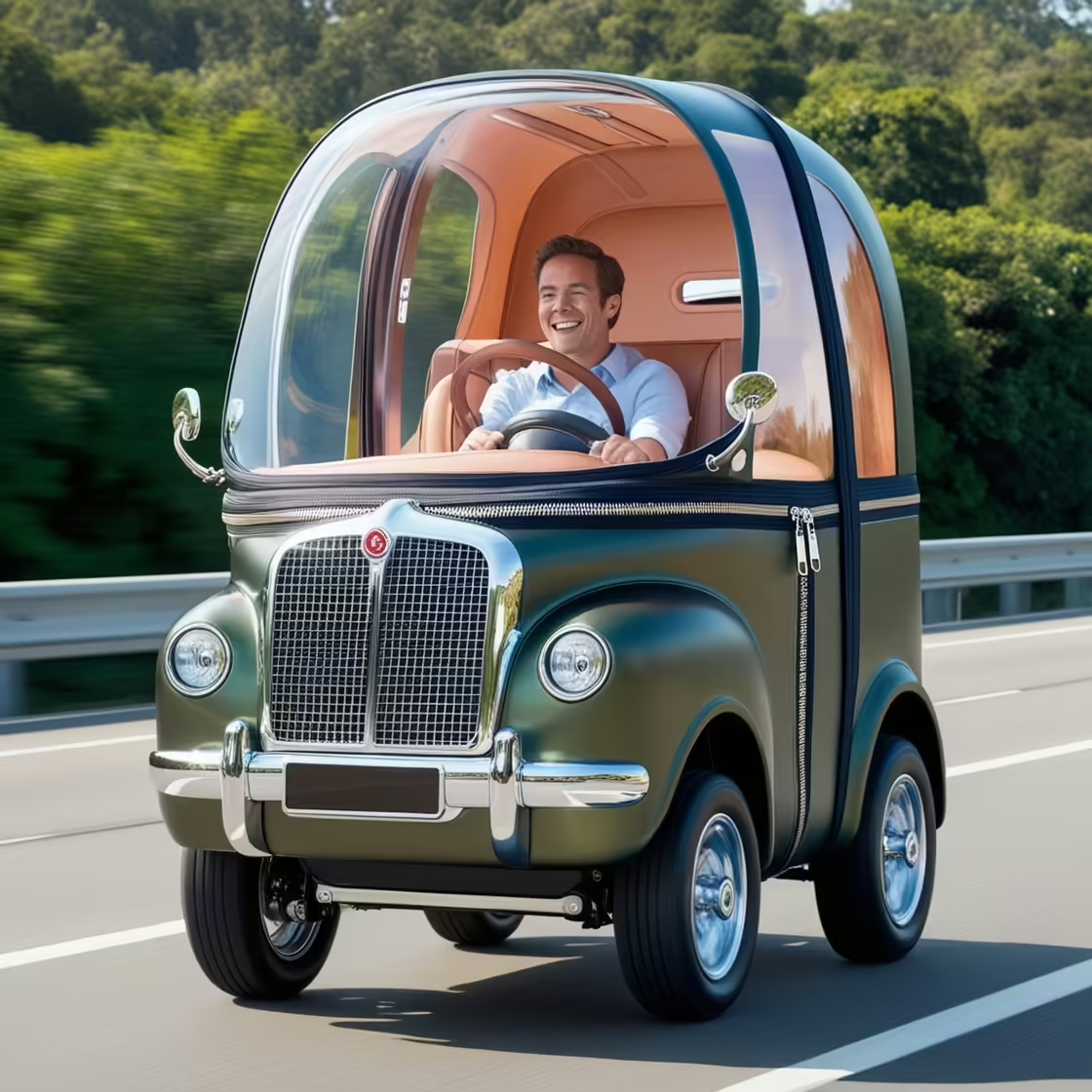In today’s ever-changing automotive world, there is a growing demand for innovation in vehicle design. One of the most intriguing concepts in this space is the suitcase-shaped car, a tiny, compact vehicle that’s as portable as it is practical. While the idea might sound futuristic, the concept of a small, suitcase-sized car has its roots in early automotive experiments. In this blog post, we’ll explore the history, design, and future potential of these unique vehicles, along with how they could revolutionize the future of transportation.
The Origins of the Suitcase-Shaped Car
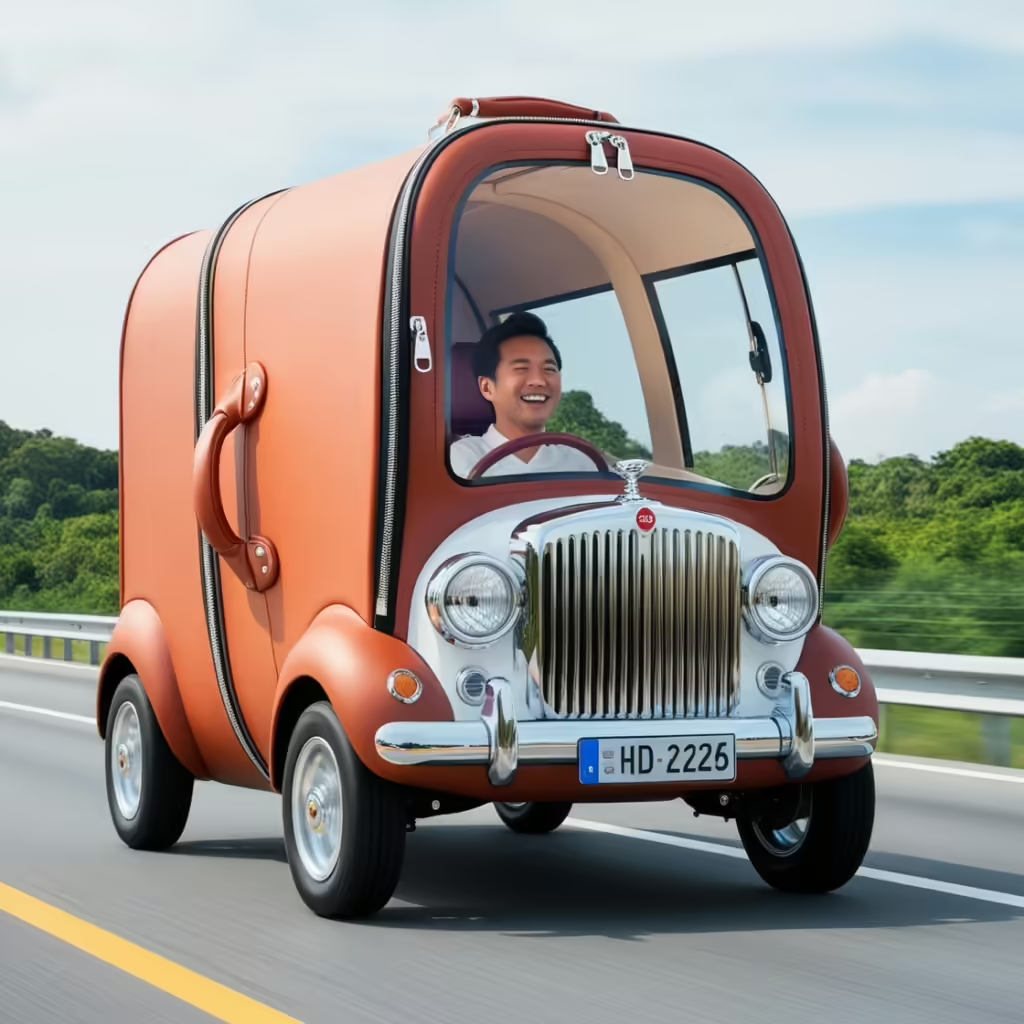
Early Inspirations and Concept Vehicles
The suitcase-shaped car concept didn’t materialize overnight. It draws inspiration from a long lineage of compact, minimalist vehicles designed to address the issues of urban congestion, affordability, and environmental impact. Early in the 20th century, innovators started toying with the idea of super-compact cars, with designs such as the Isetta bubble car of the 1950s, often referred to as “microcars.” These vehicles were designed to be lightweight, economical, and suited for city driving.
Fast forward to the late 20th and early 21st centuries, and the idea of ultra-compact cars evolved into the suitcase-shaped car concept, capturing the imagination of engineers, futurists, and environmentally conscious drivers alike.
The Impact of Urbanization on Car Design
As cities grew and space became more valuable, designers began exploring ways to make vehicles that take up less room on the road and in parking spaces. Urbanization has driven the demand for smaller, more agile vehicles, which can maneuver easily through congested streets and fit into tight parking spots. The suitcase-shaped car concept caters perfectly to these needs, offering a portable, space-saving solution for the modern driver.
What is a Suitcase-Shaped Car?
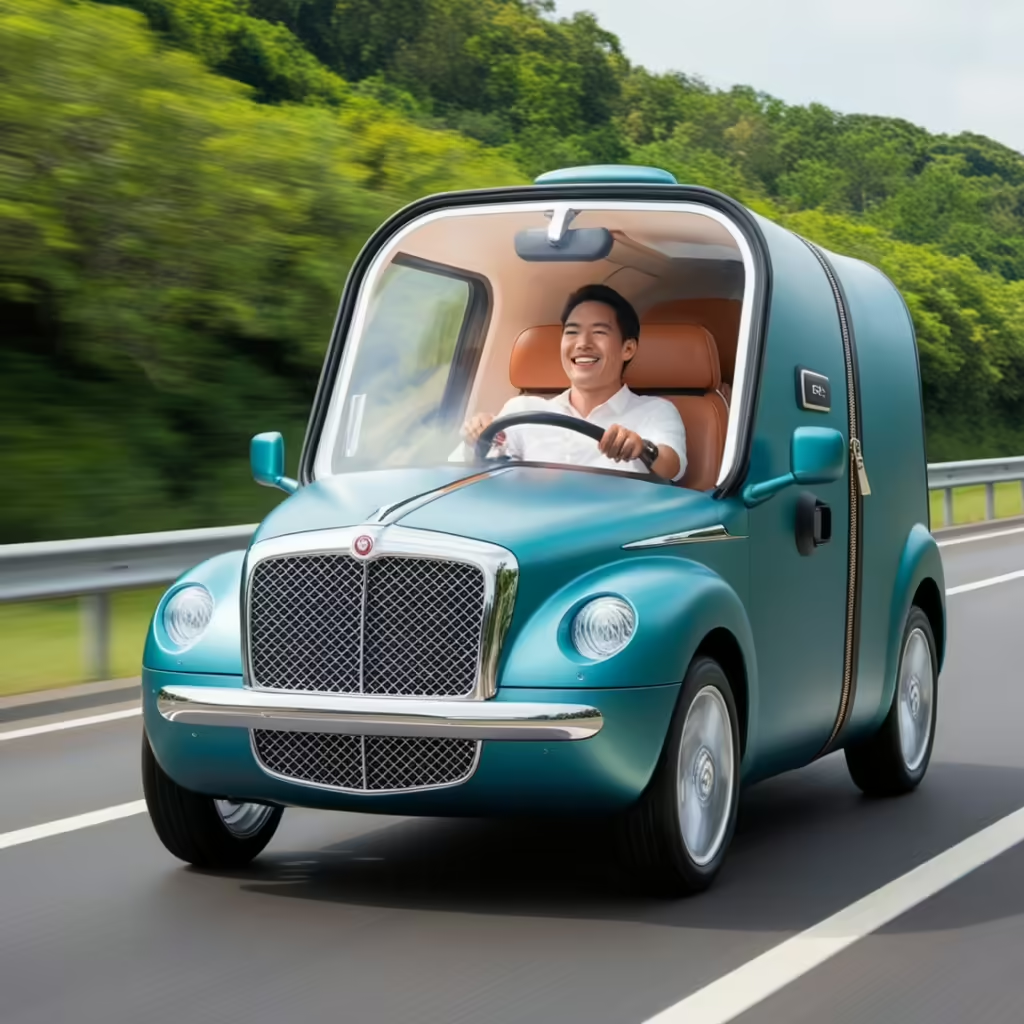
Compact, Portable, and Ultra-Efficient
The defining feature of the suitcase-shaped car is its size and portability. Unlike conventional cars, these vehicles are designed to be incredibly small, lightweight, and compact—so much so that some models can even fold down to fit into a suitcase-sized compartment. This unique design is ideal for urban dwellers who face challenges such as limited parking and high fuel costs.
Features of a Suitcase-Shaped Car
- Compact Dimensions: As the name suggests, these cars can be as small as a suitcase, with folding mechanisms that allow the vehicle to be stored in compact spaces.
- Electric or Hybrid Powertrains: Most suitcase-shaped cars are powered by electricity, aligning with the global shift toward more eco-friendly vehicles.
- Lightweight Materials: To keep the vehicle portable and efficient, suitcase-shaped cars are often made from lightweight materials such as carbon fiber and aluminum.
- User-Friendly Design: Despite their small size, these cars are designed for ease of use, often featuring intuitive controls, minimalist interiors, and accessible entry and exit points.
How Does a Suitcase-Shaped Car Work?
Suitcase-shaped cars rely on advanced engineering to offer both portability and functionality. Many models are designed to be folded or collapsed when not in use, making them ideal for short commutes or for use as a secondary vehicle.
Key Technologies in Suitcase-Shaped Cars
- Folding Mechanism: This feature allows the car to shrink down into a suitcase-sized package, making storage and transport incredibly convenient.
- Electric Propulsion: Most suitcase-shaped cars use small, efficient electric motors, which offer low emissions and quiet operation. They typically feature battery packs that can be recharged via standard electrical outlets.
- Lightweight Design: By utilizing advanced materials, such as aluminum or carbon fiber, these cars maintain a feather-light footprint, improving both fuel efficiency and handling.
The Rise in Popularity of Suitcase-Shaped Cars
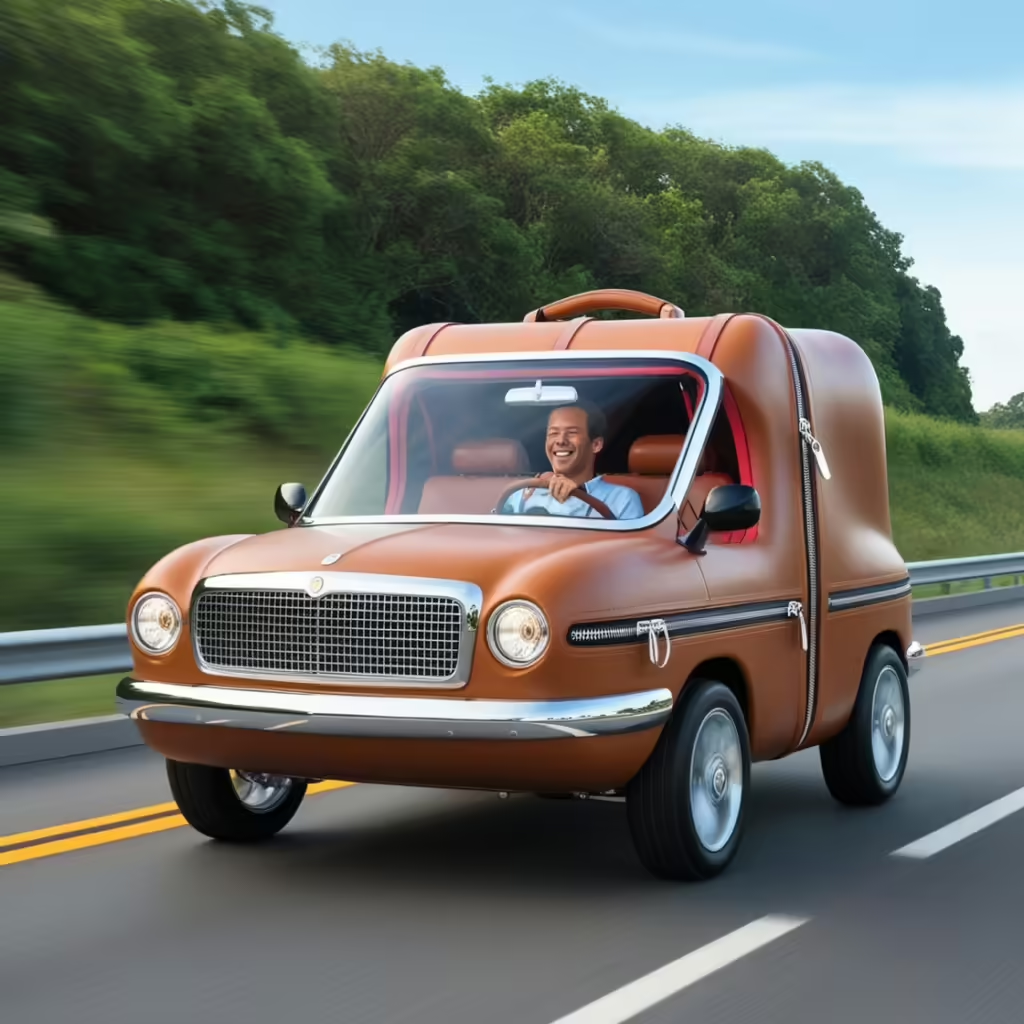
Addressing Urban Mobility Challenges
In dense urban environments, traditional vehicles can often be more of a burden than a convenience. Finding parking, navigating traffic, and dealing with high fuel costs are just some of the issues facing city drivers. The suitcase-shaped car addresses these challenges by offering an ultra-compact, fuel-efficient solution.
Target Markets for Suitcase-Shaped Cars
- Urban Commuters: Those who live and work in cities, especially in regions where parking space is limited, will find the compact design appealing.
- Travel Enthusiasts: Due to their small size, these cars are also ideal for travelers, offering a convenient, portable transportation solution that can be used on-demand.
- Eco-Conscious Drivers: With their low emissions and energy efficiency, suitcase-shaped cars cater to those looking for a green alternative to conventional vehicles.
Cost Efficiency and Environmental Impact
One of the standout features of suitcase-shaped cars is their affordability, both in terms of purchase price and ongoing operating costs. Their electric powertrains allow for low-cost recharging, while the small size means reduced material and production costs. Additionally, their low environmental footprint makes them a favorite among eco-conscious consumers.
Environmental Benefits
- Reduced Emissions: As most suitcase-shaped cars are electric, they produce zero tailpipe emissions, making them an excellent choice for cities with stringent emissions regulations.
- Efficient Use of Resources: These cars use significantly fewer materials to manufacture compared to traditional vehicles, contributing to overall resource efficiency.
- Energy Efficiency: Due to their small size and lightweight design, suitcase-shaped cars require less energy to move, resulting in superior energy efficiency.
Suitcase-Shaped Cars in Pop Culture and Innovation
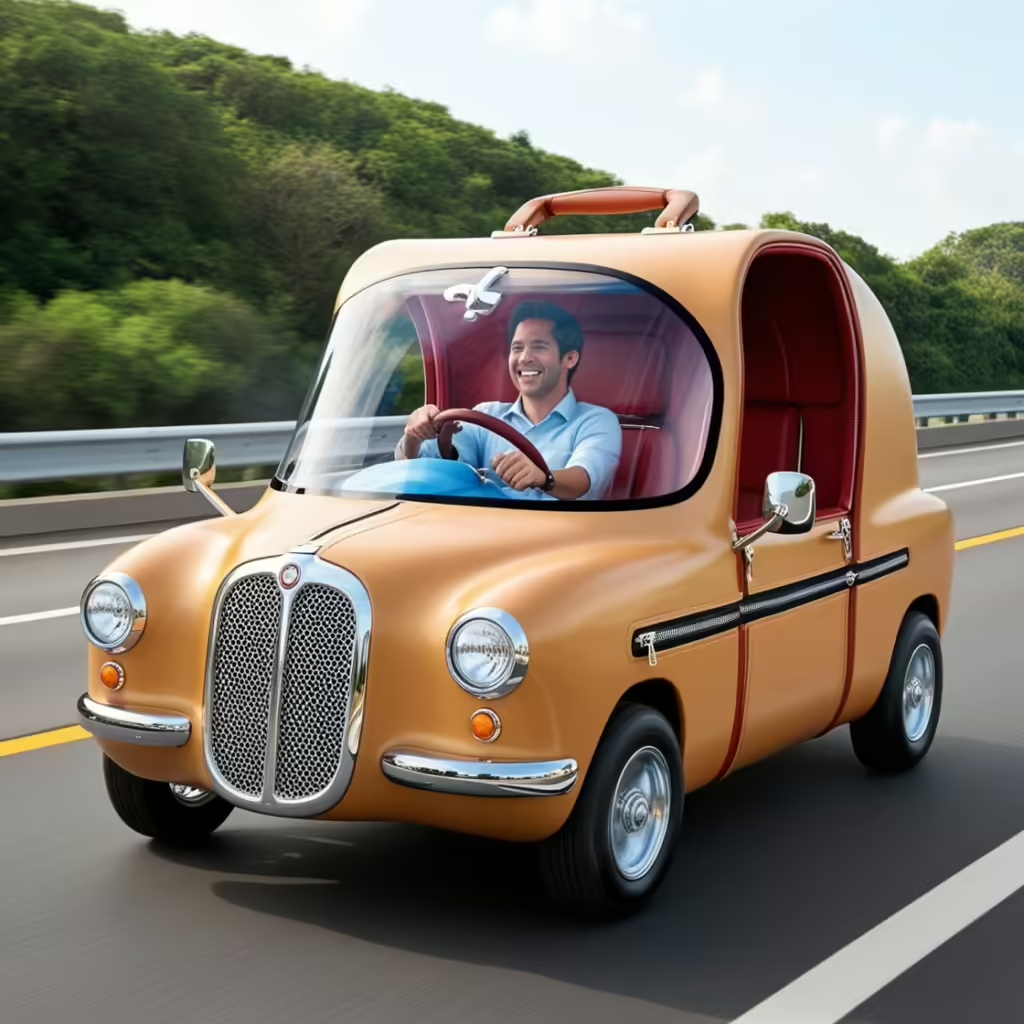
The Influence of Pop Culture
The idea of ultra-compact, suitcase-like cars has been depicted in pop culture for decades, from futuristic cartoons like The Jetsons to science fiction movies showcasing futuristic modes of transport. In a way, the suitcase-shaped car seems like a vision pulled straight out of the future, now becoming a reality.
Innovators Leading the Way
Several companies are exploring this market, with prototypes and experimental models leading the charge. Brands like City Transformer and Hiriko Fold have already made waves in the automotive world with their folding, ultra-compact cars.
The Future of Suitcase-Shaped Cars
As cities continue to expand and the demand for sustainable transport grows, we can expect to see more development in this space. Innovations in battery technology, material science, and folding mechanisms could push the suitcase-shaped car from a niche product into the mainstream.
The Challenges of Suitcase-Shaped Cars
Limitations and Considerations
While suitcase-shaped cars offer numerous benefits, they are not without challenges. From a practical perspective, their small size may limit their utility in certain scenarios. For instance, they may not be suitable for long road trips, heavy cargo transportation, or accommodating more than one or two passengers.
Safety Concerns
Safety is another concern. Due to their lightweight and compact nature, suitcase-shaped cars might not offer the same level of protection as traditional vehicles in the event of an accident. As the technology develops, automakers will need to address these concerns to ensure that these cars meet modern safety standards.
Limited Range
Because most suitcase-shaped cars are electric, they come with the same range limitations as other electric vehicles. While advances in battery technology are closing the gap, drivers will still need to consider range when planning their trips.
The Future of Suitcase-Shaped Cars
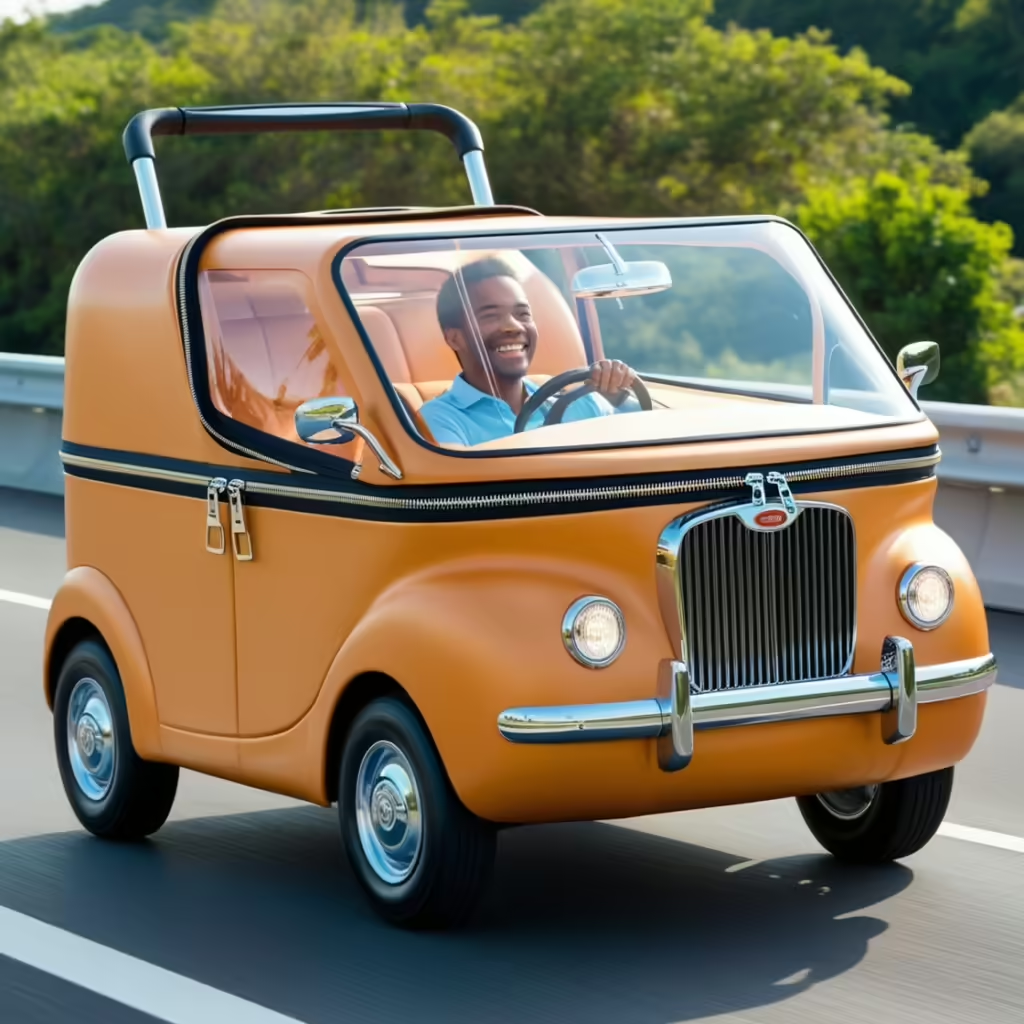
What Lies Ahead for Suitcase-Shaped Vehicles?
The future of the suitcase-shaped car is promising. As technology evolves and urban areas continue to grow, the demand for compact, efficient transportation solutions will increase. In the coming years, we can expect to see even more innovation in the design and functionality of these vehicles.
Potential for Widespread Adoption
For suitcase-shaped cars to gain widespread adoption, several factors need to be addressed. Governments may introduce incentives for owning and operating these vehicles, particularly in cities with high levels of traffic congestion. Additionally, advances in safety features and performance could make them a viable option for more consumers.
Overcoming Challenges for Mainstream Suitcase-Shaped Cars
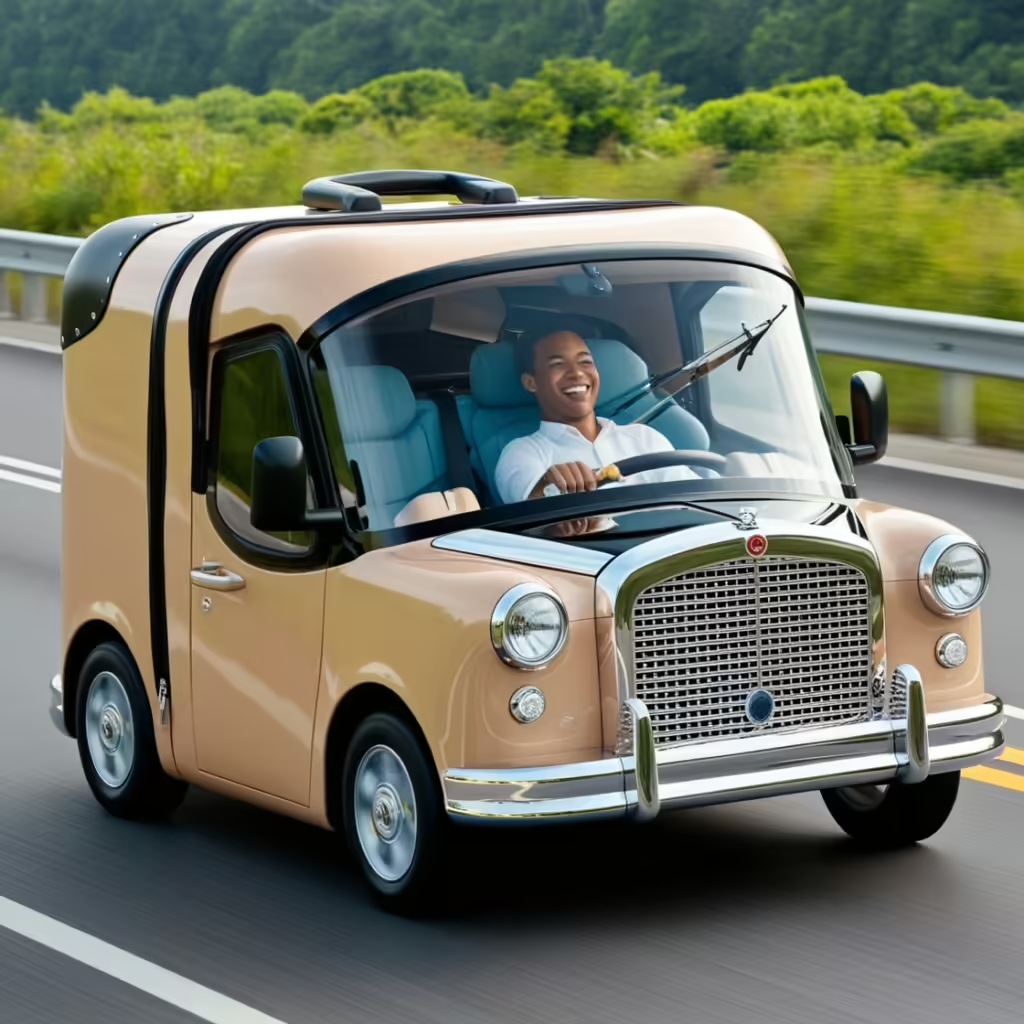
Despite the immense potential of suitcase-shaped cars, overcoming their challenges will be crucial for widespread adoption. The idea of folding a vehicle into the size of a suitcase is appealing, but several practical and infrastructural hurdles remain to be addressed before these cars become a mainstream transportation option.
Infrastructure Adaptation
One major factor that could slow down the adoption of suitcase-shaped cars is the current infrastructure, which is designed for standard-sized vehicles. Roads, parking garages, and even traffic laws are built with traditional cars in mind. For suitcase-shaped cars to fully integrate into the transportation ecosystem, there may need to be updates in urban planning, including the creation of dedicated lanes, special parking areas, and charging stations specifically for ultra-compact electric vehicles.
Charging Infrastructure and Range Anxiety
As most suitcase-shaped cars are electric, one key challenge is ensuring adequate charging infrastructure. Since these vehicles are designed for short-distance city commutes, their range is typically limited compared to full-sized electric vehicles. However, if cities were to develop efficient charging stations in dense urban areas, this concern could be minimized. Range anxiety—the fear of running out of battery power before reaching a destination—could be resolved with quick-charging stations at public transport hubs, workplaces, and even residential complexes.
Expanding the Market for Suitcase-Shaped Cars
One of the primary questions surrounding suitcase-shaped cars is whether they will be able to find a broad enough market. As it stands, these vehicles are a niche product designed for very specific use cases, primarily in urban environments. Expanding their appeal could involve targeting a variety of consumer groups, from frequent travelers to car-sharing services, and even corporate fleets looking to reduce their carbon footprint.
Corporate and Commercial Uses
Fleet operators, including delivery services and corporate car-sharing initiatives, could be another market for suitcase-shaped cars. These ultra-compact vehicles could be used in inner-city environments where large trucks are impractical, helping companies reduce emissions and save on operational costs. By integrating suitcase-shaped cars into their logistics systems, companies could improve last-mile delivery services, especially in crowded urban centers where space is a premium.
Suitcase-Shaped Cars and the Sharing Economy
In the era of the sharing economy, services like car-sharing platforms are gaining immense popularity. Suitcase-shaped cars could become a significant part of this movement by offering a low-cost, easy-to-park alternative for city residents who only need to drive short distances. Companies like Zipcar or Turo could capitalize on the space-saving advantages of these vehicles, allowing users to rent them for short trips without the hassle of finding traditional parking spots.
Customization and Personalization of Suitcase-Shaped Cars
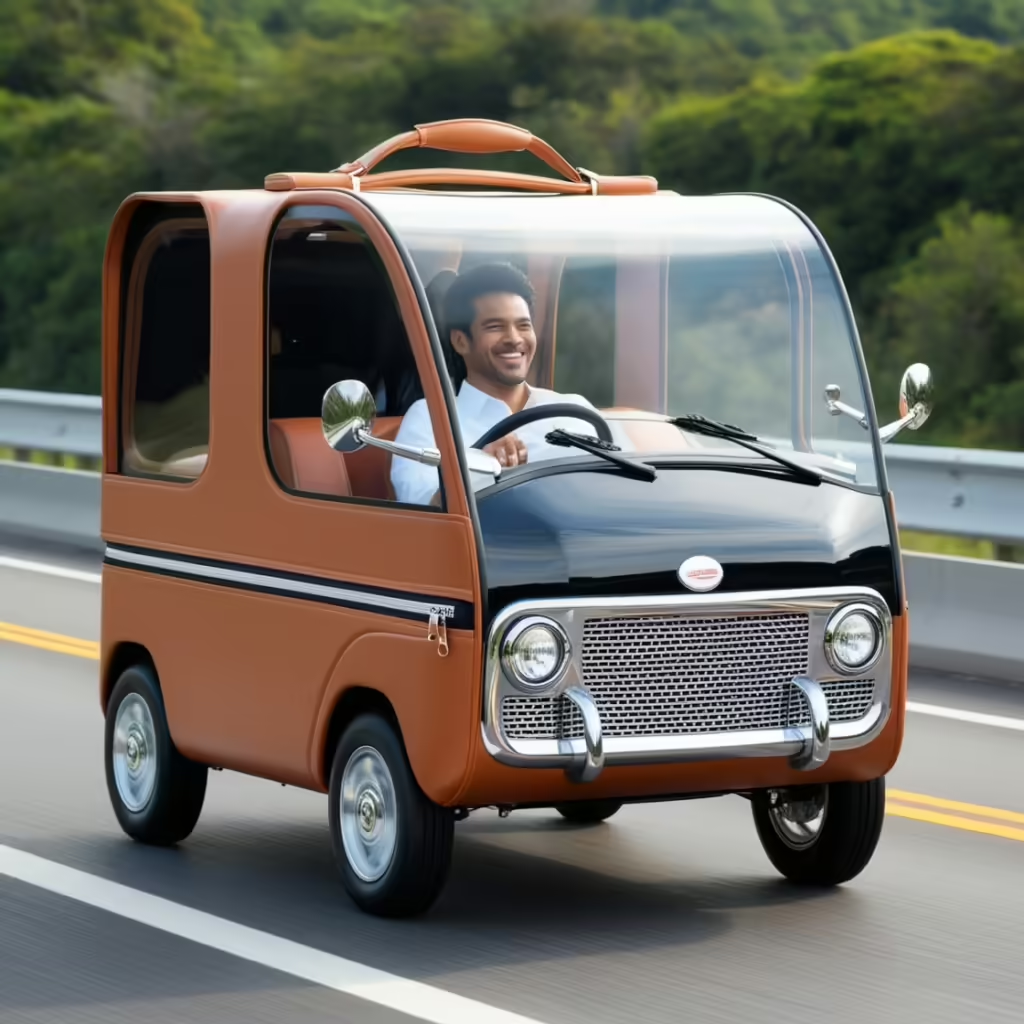
Customization could also play a role in the broader appeal of suitcase-shaped cars. Consumers love personalized products, and cars are no exception. The compact size and unique shape of these vehicles lend themselves well to customization, allowing drivers to make their suitcase-shaped car truly their own.
Options for Customization
- Exterior Colors and Wraps: With a smaller surface area, customizing the exterior paint or vinyl wrap of a suitcase-shaped car becomes affordable and accessible, allowing for endless personalization options.
- Interior Features: While space may be limited, manufacturers can offer customizable interior layouts, from seating materials to dashboard designs, allowing drivers to select features that suit their preferences.
- Technology Add-ons: With the increasing integration of smart technology into vehicles, suitcase-shaped cars could feature personalized infotainment systems, custom-built navigation tools, or even voice-activated controls for an enhanced user experience.
Suitcase-Shaped Cars and Autonomous Technology
One of the most exciting possibilities for the future of suitcase-shaped cars is their potential to integrate autonomous driving technology. As cities shift towards more automation, suitcase-shaped cars could be some of the first vehicles to offer full autonomy due to their low-speed, short-distance use cases.
Autonomous Driving in Urban Settings
Autonomous technology could be particularly useful for suitcase-shaped cars, as these vehicles are designed for dense urban areas where traffic is slower and more predictable. By integrating self-driving technology, these cars could help reduce traffic accidents, improve fuel efficiency, and enhance the overall driving experience. The combination of small size, electric power, and autonomous capabilities could make the suitcase-shaped car a pioneer in smart city transportation.
Challenges in Autonomous Integration
However, the adoption of autonomous suitcase-shaped cars faces challenges, including regulatory hurdles and the need for extensive testing to ensure safety. Cities will need to implement new laws and infrastructure to accommodate autonomous vehicles, particularly in terms of traffic management and pedestrian safety.
Environmental and Economic Benefits of Suitcase-Shaped Cars
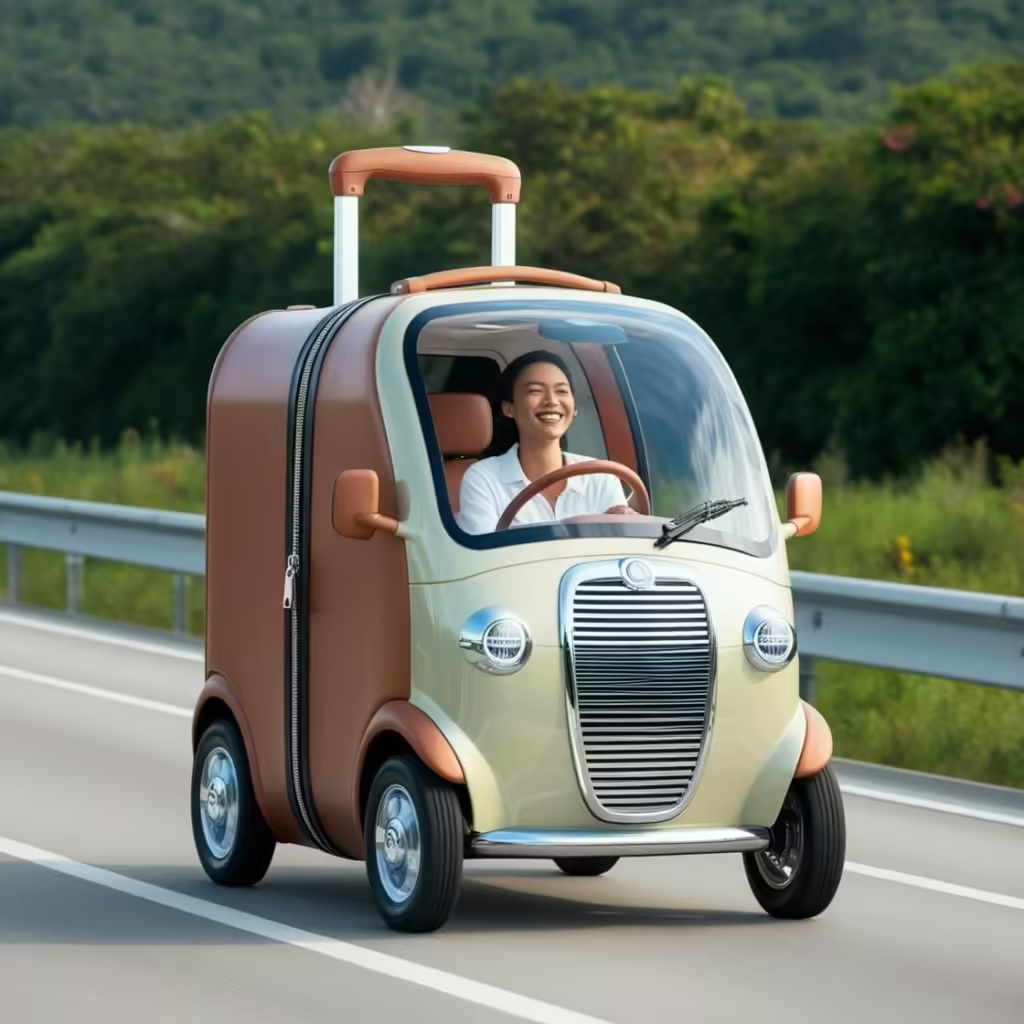
One of the strongest selling points of suitcase-shaped cars is their positive environmental impact. As the world increasingly turns its focus toward reducing greenhouse gas emissions, these compact electric vehicles offer an excellent solution for urban transportation.
Reducing Carbon Footprint
With their all-electric powertrains, suitcase-shaped cars contribute to reducing the overall carbon footprint of cities. Since they consume less energy and materials, their entire lifecycle—from manufacturing to use—produces fewer emissions compared to traditional vehicles. These benefits are especially significant in areas with air quality issues, where governments are incentivizing the use of low-emission vehicles.
Economic Advantages for Owners
Beyond their environmental benefits, suitcase-shaped cars offer significant economic advantages for owners. Not only are these vehicles cheaper to manufacture, but their maintenance costs are also lower compared to conventional cars. Due to the compact design and use of lightweight materials, there’s less wear and tear, resulting in fewer repairs and lower insurance premiums. Additionally, electric cars are generally cheaper to operate because electricity costs are much lower than gasoline or diesel fuel.
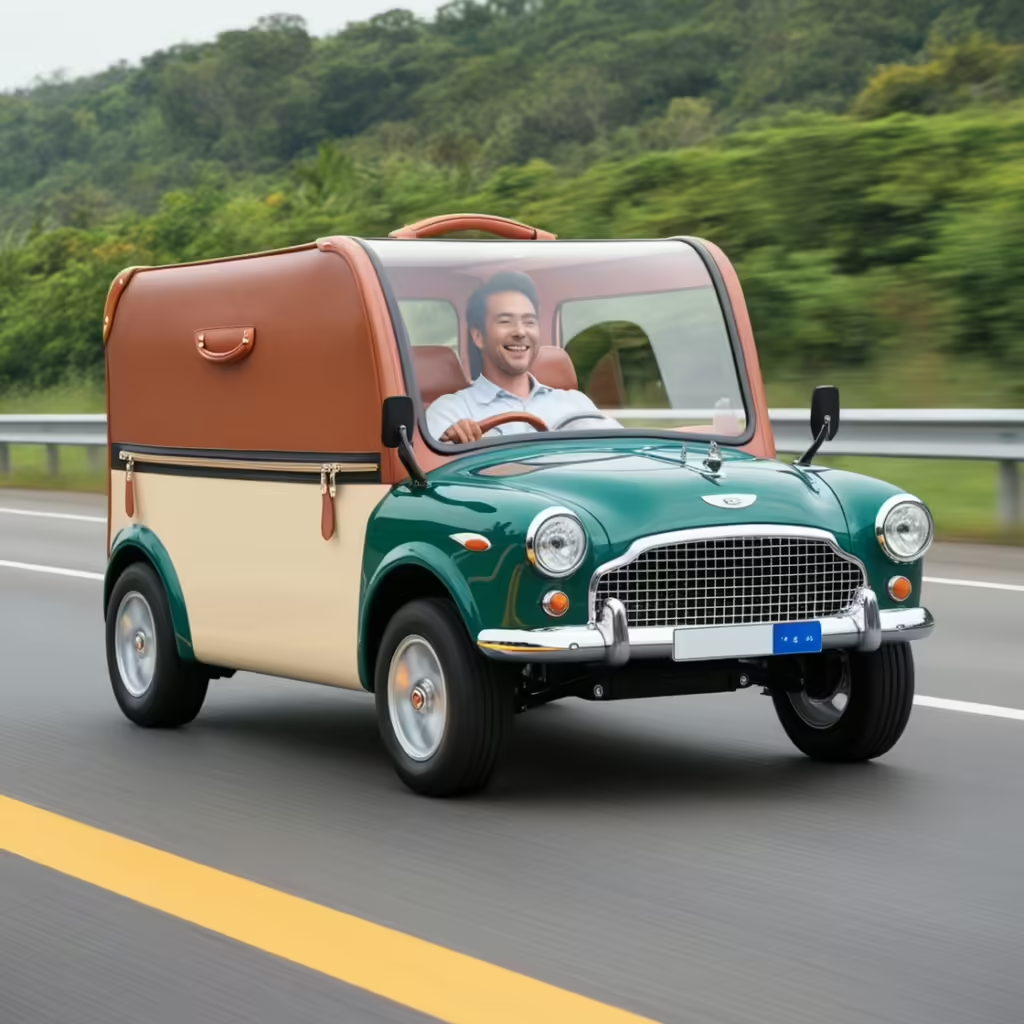
Conclusion: The Suitcase-Shaped Car as a Symbol of Future Mobility
The suitcase-shaped car represents more than just a quirky design concept; it embodies a forward-thinking approach to transportation in the 21st century. As cities become more crowded and the environmental costs of traditional vehicles rise, these compact, portable cars offer a glimpse into the future of urban mobility. With their eco-friendly design, space-saving capabilities, and potential for personalization, suitcase-shaped cars are poised to play a pivotal role in the ongoing transformation of how we navigate our cities.
While there are still challenges to address, such as safety concerns and the need for updated infrastructure, the potential for suitcase-shaped cars to revolutionize urban transportation is undeniable. Whether used by city commuters, shared in car-sharing fleets, or integrated into smart cities of the future, these vehicles represent a bold step toward more efficient, sustainable, and innovative modes of transport.
The suitcase-shaped car may be small, but its impact on the future of transportation could be enormous. As the world moves toward greener, more efficient ways of getting around, this innovative vehicle has the potential to lead the way, offering a unique solution to the challenges of modern urban life.

